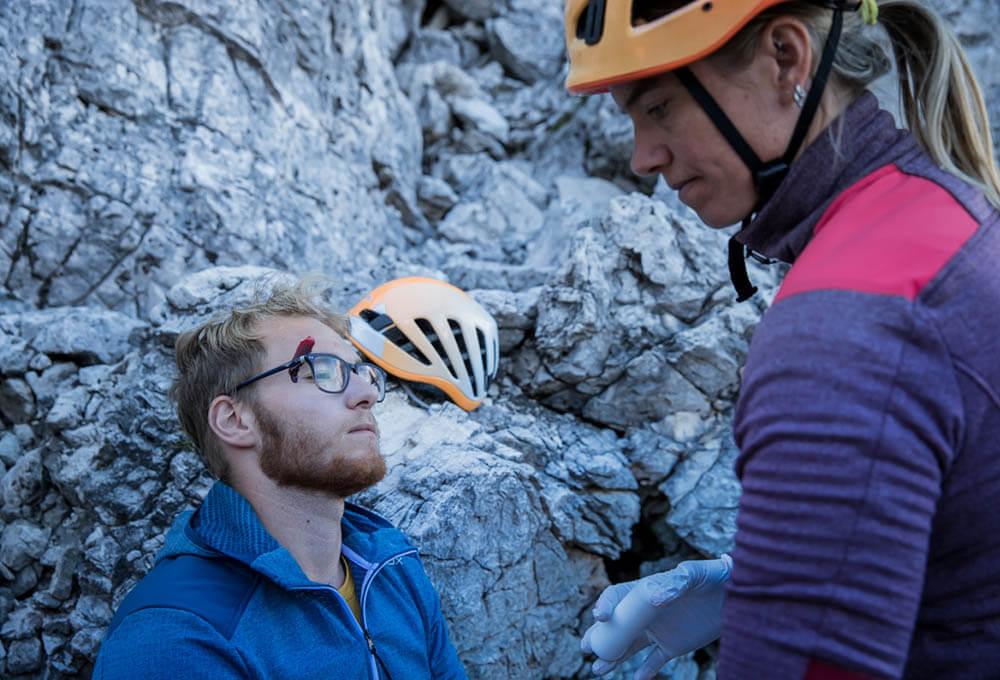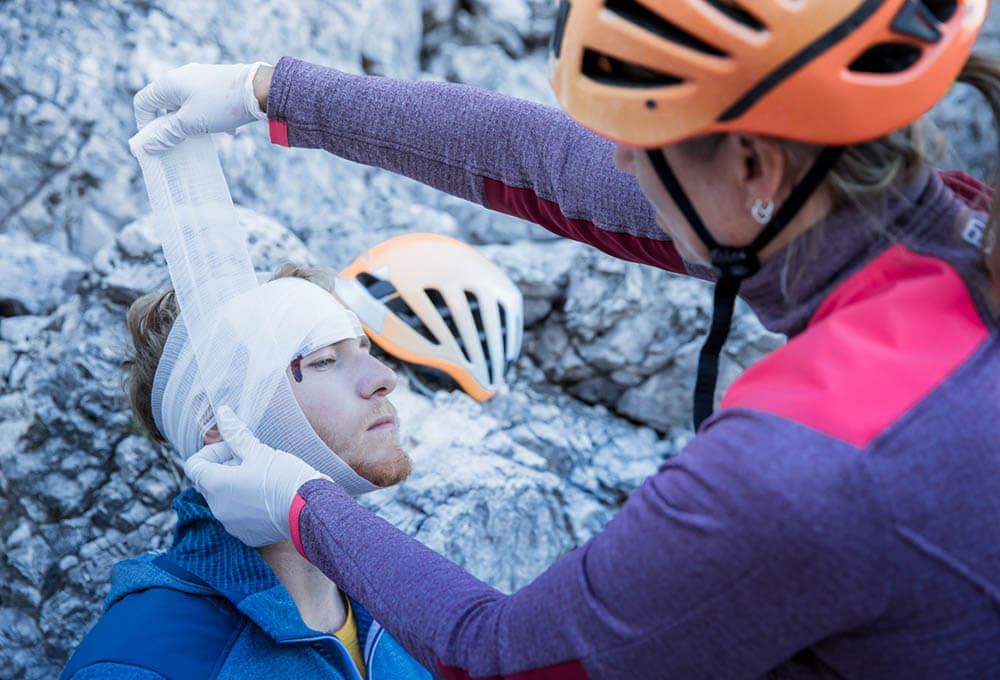Concussion
Concussion can occur even with a helmet. While a helmet may protect against fatal injury, a severe impact or falling rocks can still cause cuts to the head or brain injuries.
A cut to the head is an external injury. Traumatic brain injury, which includes concussion, is an injury within the skull and – depending on severity – can be life threatening.

Typical symptoms for concussion are headaches, dizziness, nausea, possibly also disorientation and mental confusion. Other symptoms may also include vomiting, memory loss, difficulty with movement and visual and/or speech impairment. Loss of consciousness is a possibility.

The injured person should be positioned with the upper body in an elevated position and wrapped up warmly. If the accident victim needs to vomit, the first responder can assist by turning the person onto their side. External injuries such as cuts to the head can be covered with a sterile dressing.
A rapid emergency call is essential. The injured person should NOT be given anything to eat or drink.


